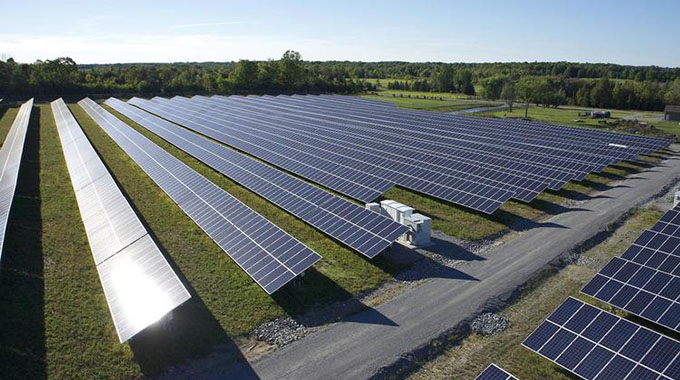
We can expect the debate about the future of electricity supply to reignite after the National Energy Regulator of South Africa (Nersa) granted Eskom approval to increase prices to recover past expenditure to the tune of R13,3 billion and warnings that load shedding is bound to resume when economic activity restarts.
The coming increase in electricity tariffs is due to the pricing structure that allows Eskom to adjust future prices to claw back “lost revenue” of the previous year if costs and income differed from estimates tabled when prices were determined at the beginning of the year.
An alternative view of the pricing process is that Eskom uses the so-called regulatory clearing account to recover revenues it did not get during a particular period because Nersa did not grant the tariff increase that Eskom applied for originally.
Setting prices a ‘‘game’’
The process of setting electricity prices has become a game, with Eskom applying for an increase and Nersa allowing less than what Eskom asked for, followed by the next round of negotiations in which Eskom ask for a claw-back of revenue after the event — with Nersa, once again, approving less than requested.
Nersa announced that Eskom applied in August last year for an increase in electricity tariffs big enough to ensure the recovery of R27,3 billion relating to a shortfall of revenue in the 2018/2019 year, but Nersa only allowed adjustment in tariffs to recover R13.3 billion.
Meanwhile, Eskom is stumbling from one problem to the next. Its debt is increasing and its older power stations need lots of maintenance and repair work, while the newer power stations are plagued by design faults.
In addition, its labour force stymies cost-cutting exercises, politicians refuse to consider restructuring proposals, and environmental issues with its fleet of coal-fired power stations have created huge problems.
Options
Alternatives are slowly gaining ground, as Sasol’s recent invitation to suppliers of renewable energy shows.
Sasol intends procuring a total of 600MW of renewable energy to reduce greenhouse gas emissions from the generation of electricity by approximately 1,6 million tons per annum.
It is not only environmental factors that are driving renewable energy projects anymore. In SA, it is increasingly becoming a necessity to counter electricity shortages.
Figures and estimates show that independent power producers and corporate installations are close to generating as much electricity as one of Eskom’s modern power stations. Importantly, this ‘power station’ was built and financed by the private sector and is operating without a cent of assistance from taxpayers.
Utility-scale projects
Energyblog lists a total of 95 utility-scale sustainable energy projects in SA that are operational, in construction, or approved with construction starting soon.
The total installed capacity of these projects will exceed 6 400MW, with an estimated generating capacity of nearly 2 000MW.
Estimates of other green energy installations (mostly commercial, industrial and residential solar installations) differ widely, with the SA Photovoltaic Industry Association (Sapvia) estimating at least 1 200MW of grid-tied installations and the SA Wind Energy Association (Sawea) a total of at least 2 000MW.
Installed capacity of 2 000MW equals generating capacity of around 600MW. Thus, the total generating capacity of green energy in SA is approaching 2 500MW — just less than the average produced by Eskom’s fleet.
Eskom’s newest six-pack power stations consist of six generating units designed to produce 600MW each for a total of 3 600MW from every one of the modern power stations, but Eskom is still running its older, small power stations.
Figures supplied to Moneyweb by Sapvia CEO Niveshen Govender show that installation of photovoltaic solar systems is expected to increase threefold in the next 10 years, from the current installed capacity of around 3 800MW to 12 000MW.
Multiple benefits
“It can create a significant number of jobs, contribute to carbon reduction targets and promote local manufacture,” says Govender.
“We remain positive that solar PV (photovoltaic) storage is the future of energy supply in SA as demonstrated globally.”
He points out that solar technology continues to improve, while costs are decreasing. However, says Govender, the recent weakening in the exchange rate will have an impact on the cost of new projects.
The wind energy people share these sentiments. Sawea CEO Ntombifuthi Ntuli says the Integrated Resource Plan 2019 (IRP 2019) makes provision for another 14 400MW worth of wind energy installations over the next 10 years, which will have a knock-on effect through the economy.
“Wind power has a role in bridging the gap in energy availability as SA will see massive decommissioning of old coal-fired power stations over the next 10 years as the plants reach the end of their lives.
“This new generation capacity from wind energy will have positive spin-offs for the country’s economy as it is expected to attract more than R300 billion in investments, create jobs across the industry value chain and deliver cheap electricity to consumers,” says Ntuli.
He says the association believes the build of new wind farms should be part of government’s Covid-19 stimulus package, since “it is infrastructure investment that government does not need to put capital investment into”.
It is all financed by private investors. — Moneyweb
